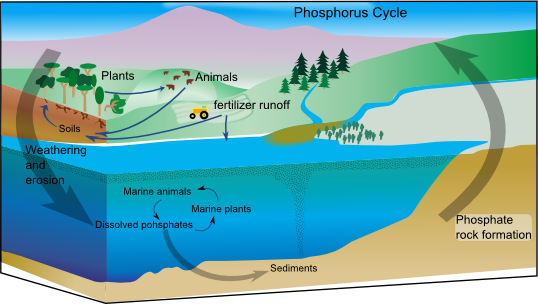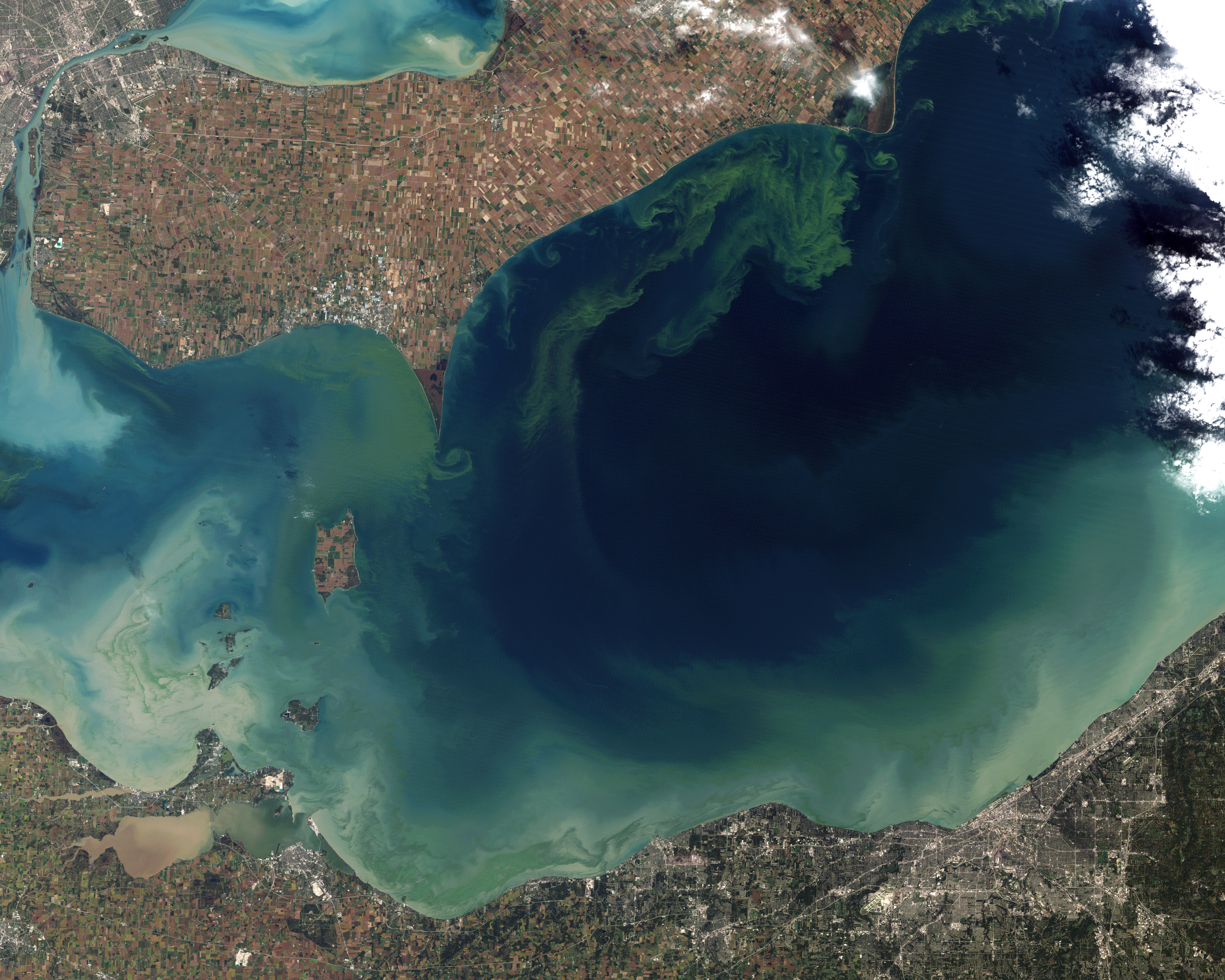|
Kathryn L. Cottingham
Kathryn Linn Cottingham is a Professor of Ecology, Evolution, Environment and Society in the John Sloan Dickey Center for International Understanding at Dartmouth College. She is a Fellow of the Ecological Society of America and American Association for the Advancement of Science. From 2020 she will serve as editor-in-chief of the journal '' Ecology''. Early life and education Cottingham earned her bachelor's degree at Drew University in 1990. Here she majored in mathematics and biology, and played lacrosse and field hockey. Cottingham played Lacrosse in the National Collegiate Athletic Association Division III Tournament during her first season and was on the team that won the 1988 Middle Atlantic Conference championship. She was the only NCAA Division III athlete to earn one of the Disney Scholar-Athlete Awards. She moved to the University of Wisconsin–Madison for her graduate studies, where she earned her master's and doctoral degrees under the supervision of St ... [...More Info...] [...Related Items...] OR: [Wikipedia] [Google] [Baidu] |
Dartmouth College
Dartmouth College (; ) is a private research university in Hanover, New Hampshire. Established in 1769 by Eleazar Wheelock, it is one of the nine colonial colleges chartered before the American Revolution. Although founded to educate Native Americans in Christian theology and the English way of life, the university primarily trained Congregationalist ministers during its early history before it gradually secularized, emerging at the turn of the 20th century from relative obscurity into national prominence. It is a member of the Ivy League. Following a liberal arts curriculum, Dartmouth provides undergraduate instruction in 40 academic departments and interdisciplinary programs, including 60 majors in the humanities, social sciences, natural sciences, and engineering, and enables students to design specialized concentrations or engage in dual degree programs. In addition to the undergraduate faculty of arts and sciences, Dartmouth has four professional and graduate schools: ... [...More Info...] [...Related Items...] OR: [Wikipedia] [Google] [Baidu] |
Food Web
A food web is the natural interconnection of food chains and a graphical representation of what-eats-what in an ecological community. Another name for food web is consumer-resource system. Ecologists can broadly lump all life forms into one of two categories called trophic levels: 1) the autotrophs, and 2) the heterotrophs. To maintain their bodies, grow, develop, and to reproduce, autotrophs produce organic matter from inorganic substances, including both minerals and gases such as carbon dioxide. These chemical reactions require energy, which mainly comes from the Sun and largely by photosynthesis, although a very small amount comes from bioelectrogenesis in wetlands, and mineral electron donors in hydrothermal vents and hot springs. These trophic levels are not binary, but form a gradient that includes complete autotrophs, which obtain their sole source of carbon from the atmosphere, mixotrophs (such as carnivorous plants), which are autotrophic organisms that partially ... [...More Info...] [...Related Items...] OR: [Wikipedia] [Google] [Baidu] |
East Coast Of The United States
The East Coast of the United States, also known as the Eastern Seaboard, the Atlantic Coast, and the Atlantic Seaboard, is the coastline along which the Eastern United States meets the North Atlantic Ocean. The eastern seaboard contains the coastal states and areas east of the Appalachian Mountains that have shoreline on the Atlantic Ocean, namely, Maine, New Hampshire, Massachusetts, Rhode Island, Connecticut, New York, New Jersey, Delaware, Maryland, Virginia, North Carolina, South Carolina, Georgia, and Florida.General Reference Map , , 2003. Toponymy and composition T ...[...More Info...] [...Related Items...] OR: [Wikipedia] [Google] [Baidu] |
Artificial Intelligence
Artificial intelligence (AI) is intelligence—perceiving, synthesizing, and inferring information—demonstrated by machines, as opposed to intelligence displayed by animals and humans. Example tasks in which this is done include speech recognition, computer vision, translation between (natural) languages, as well as other mappings of inputs. The ''Oxford English Dictionary'' of Oxford University Press defines artificial intelligence as: the theory and development of computer systems able to perform tasks that normally require human intelligence, such as visual perception, speech recognition, decision-making, and translation between languages. AI applications include advanced web search engines (e.g., Google), recommendation systems (used by YouTube, Amazon and Netflix), understanding human speech (such as Siri and Alexa), self-driving cars (e.g., Tesla), automated decision-making and competing at the highest level in strategic game systems (such as chess and Go). ... [...More Info...] [...Related Items...] OR: [Wikipedia] [Google] [Baidu] |
Big Data
Though used sometimes loosely partly because of a lack of formal definition, the interpretation that seems to best describe Big data is the one associated with large body of information that we could not comprehend when used only in smaller amounts. In it primary definition though, Big data refers to data sets that are too large or complex to be dealt with by traditional data-processing application software. Data with many fields (rows) offer greater statistical power, while data with higher complexity (more attributes or columns) may lead to a higher false discovery rate. Big data analysis challenges include capturing data, data storage, data analysis, search, sharing, transfer, visualization, querying, updating, information privacy, and data source. Big data was originally associated with three key concepts: ''volume'', ''variety'', and ''velocity''. The analysis of big data presents challenges in sampling, and thus previously allowing for only observations and sampling. ... [...More Info...] [...Related Items...] OR: [Wikipedia] [Google] [Baidu] |
Trophic State Index
The Trophic State Index (TSI) is a classification system designed to rate water bodies based on the amount of biological productivity they sustain. Although the term "trophic index" is commonly applied to lakes, any surface water body may be indexed. The TSI of a water body is rated on a scale from zero to one hundred. Under the TSI scale, water bodies may be defined as: * oligotrophic (TSI 0–40, having the least amount of biological productivity, "good" water quality); * mesotrophic (TSI 40–60, having a moderate level of biological productivity, "fair" water quality); or * eutrophic to hypereutrophic (TSI 60–100, having the highest amount of biological productivity, "poor" water quality). The quantities of nitrogen, phosphorus, and other biologically useful nutrients are the primary determinants of a water body's TSI. Nutrients such as nitrogen and phosphorus tend to be limiting resources in standing water bodies, so increased concentrations tend to result in increased p ... [...More Info...] [...Related Items...] OR: [Wikipedia] [Google] [Baidu] |
Phosphorus Cycle
The phosphorus cycle is the biogeochemical cycle that describes the movement of phosphorus through the lithosphere, hydrosphere, and biosphere. Unlike many other biogeochemical cycles, the Earth's atmosphere, atmosphere does not play a significant role in the movement of phosphorus, because phosphorus and phosphorus-based compounds are usually solids at the typical ranges of temperature and pressure found on Earth. The production of phosphine gas occurs in only specialized, local conditions. Therefore, the phosphorus cycle should be viewed from whole Earth system and then specifically focused on the cycle in terrestrial and aquatic systems. Living organisms require phosphorus, a vital component of DNA, RNA, Adenosine triphosphate, ATP, etc, for their proper functioning. Plants assimilate phosphorus as phosphate and incorporate it into organic compounds and in animals, phosphorus is a key component of bones, teeth, etc. On the land, phosphorus gradually becomes less available to p ... [...More Info...] [...Related Items...] OR: [Wikipedia] [Google] [Baidu] |
Nitrogen Cycle
The nitrogen cycle is the biogeochemical cycle by which nitrogen is converted into multiple chemical forms as it circulates among atmospheric, terrestrial, and marine ecosystems. The conversion of nitrogen can be carried out through both biological and physical processes. Important processes in the nitrogen cycle include fixation, ammonification, nitrification, and denitrification. The majority of Earth's atmosphere (78%) is atmospheric nitrogen, making it the largest source of nitrogen. However, atmospheric nitrogen has limited availability for biological use, leading to a scarcity of usable nitrogen in many types of ecosystems. The nitrogen cycle is of particular interest to ecologists because nitrogen availability can affect the rate of key ecosystem processes, including primary production and decomposition. Human activities such as fossil fuel combustion, use of artificial nitrogen fertilizers, and release of nitrogen in wastewater have dramatically altered the global nitr ... [...More Info...] [...Related Items...] OR: [Wikipedia] [Google] [Baidu] |
Algal Bloom
An algal bloom or algae bloom is a rapid increase or accumulation in the population of algae in freshwater or marine water systems. It is often recognized by the discoloration in the water from the algae's pigments. The term ''algae'' encompasses many types of aquatic photosynthetic organisms, both macroscopic multicellular organisms like seaweed and microscopic unicellular organisms like cyanobacteria. ''Algal bloom'' commonly refers to the rapid growth of microscopic unicellular algae, not macroscopic algae. An example of a macroscopic algal bloom is a kelp forest. Algal blooms are the result of a nutrient, like nitrogen or phosphorus from various sources (for example fertilizer runoff or other forms of nutrient pollution), entering the aquatic system and causing excessive growth of algae. An algal bloom affects the whole ecosystem. Consequences range from the benign feeding of higher trophic levels to more harmful effects like blocking sunlight from reaching other organ ... [...More Info...] [...Related Items...] OR: [Wikipedia] [Google] [Baidu] |
Cyanobacteria
Cyanobacteria (), also known as Cyanophyta, are a phylum of gram-negative bacteria that obtain energy via photosynthesis. The name ''cyanobacteria'' refers to their color (), which similarly forms the basis of cyanobacteria's common name, blue-green algae, although they are not usually scientifically classified as algae. They appear to have originated in a freshwater or terrestrial environment. Sericytochromatia, the proposed name of the paraphyletic and most basal group, is the ancestor of both the non-photosynthetic group Melainabacteria and the photosynthetic cyanobacteria, also called Oxyphotobacteria. Cyanobacteria use photosynthetic pigments, such as carotenoids, phycobilins, and various forms of chlorophyll, which absorb energy from light. Unlike heterotrophic prokaryotes, cyanobacteria have internal membranes. These are flattened sacs called thylakoids where photosynthesis is performed. Phototrophic eukaryotes such as green plants perform photosynthesis in plast ... [...More Info...] [...Related Items...] OR: [Wikipedia] [Google] [Baidu] |
Aquatic Ecosystem
An aquatic ecosystem is an ecosystem formed by surrounding a body of water, in contrast to land-based terrestrial ecosystems. Aquatic ecosystems contain communities of organisms that are dependent on each other and on their environment. The two main types of aquatic ecosystems are marine ecosystems and freshwater ecosystems. Freshwater ecosystems may be lentic (slow moving water, including pools, ponds, and lakes); lotic (faster moving water, for example streams and rivers); and wetlands (areas where the soil is saturated or inundated for at least part of the time). Types Marine ecosystems Marine coastal ecosystem Marine surface ecosystem Freshwater ecosystems Lentic ecosystem (lakes) Lotic ecosystem (rivers) Wetlands Functions Aquatic ecosystems perform many important environmental functions. For example, they recycle nutrients, purify water, attenuate floods, recharge ground water and provide habitats for wildlife. Aquatic ecosystems are also used for ... [...More Info...] [...Related Items...] OR: [Wikipedia] [Google] [Baidu] |
Terrestrial Ecosystem
Terrestrial ecosystems are ecosystems which are found on land. Examples include tundra, taiga, temperate deciduous forest, tropical rain forest, grassland, deserts. Terrestrial ecosystems differ from aquatic ecosystems by the predominant presence of soil rather than water at the surface and by the extension of plants above this soil/water surface in terrestrial ecosystems. There is a wide range of water availability among terrestrial ecosystems (including water scarcity in some cases), whereas water is seldom a limiting factor to organisms in aquatic ecosystems. Because water buffers temperature fluctuations, terrestrial ecosystems usually experience greater diurnal and seasonal temperature fluctuations than do aquatic ecosystems in similar climates. Terrestrial ecosystems are of particular importance especially in meeting Sustainable Development Goal 15 that targets the conservation-restoration and sustainable use of terrestrial ecosystems. Organisms and processes Organis ... [...More Info...] [...Related Items...] OR: [Wikipedia] [Google] [Baidu] |










